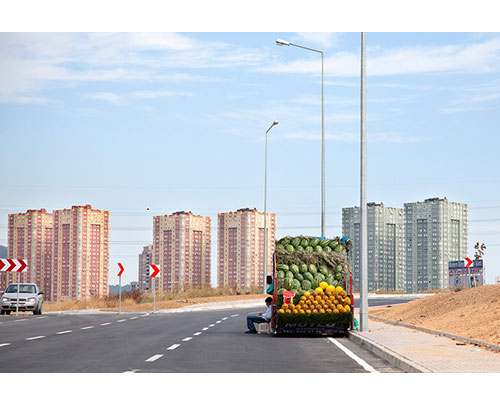TOPLU: LANDSCAPES OF NEW TURKISH SUBURBIAI have a long-standing interest in the cultural landscape of residential areas. My previous work includes an extended project on the suburban landscapes of Midwestern America. I looked at delineations and borders - how residents and planners defined their spaces against the perceived chaos of the outside world. I first traveled to Turkey in 2004 and have returned many times since. In this landscape, I began to see many parallels to my previous work played out on an exaggerated scale. In 2008, I began photographing the rapidly changing landscape of these far-flung, densely populated regions on the suburban outskirts. I was initially struck by the Toplu Konut, developments of large scale mass-residences. In these photographs, many are still under construction - plopped down into empty fields at a startling pace. Others are tidy high-rise condominium clusters that are self-contained with their own restaurants, schools, shops, swimming pools, tennis courts, and playgrounds. Within their walls they are meticulously landscaped and manicured. Toplu, the title of the project, has the dual meaning of 1. mass, common; as well as 2. tidy or neat. These modern, hyper-planned, enclosed developments are usually built on inexpensive land. This land has usually already been settled by people who've migrated to cities from rural villages. Here, they have built gecekondu, homes constructed without permits on public land. Turkish law makes these structures difficult to remove once they are in place. The term "gecekondu" literally means "built overnight", a reference to their quick, unplanned and stealthy construction. These photographs don't depict the ancient palaces, mosques, and ruins of guidebooks. This is the everyday Turkey of a rising middle class, heavily influenced by Western Europe and the United States. This is also the Turkey of displaced migrants, shantytowns and gentrification. This is the site where they intersect. |
||
all content © Mark Slankard 2000 - 2011 |
||
